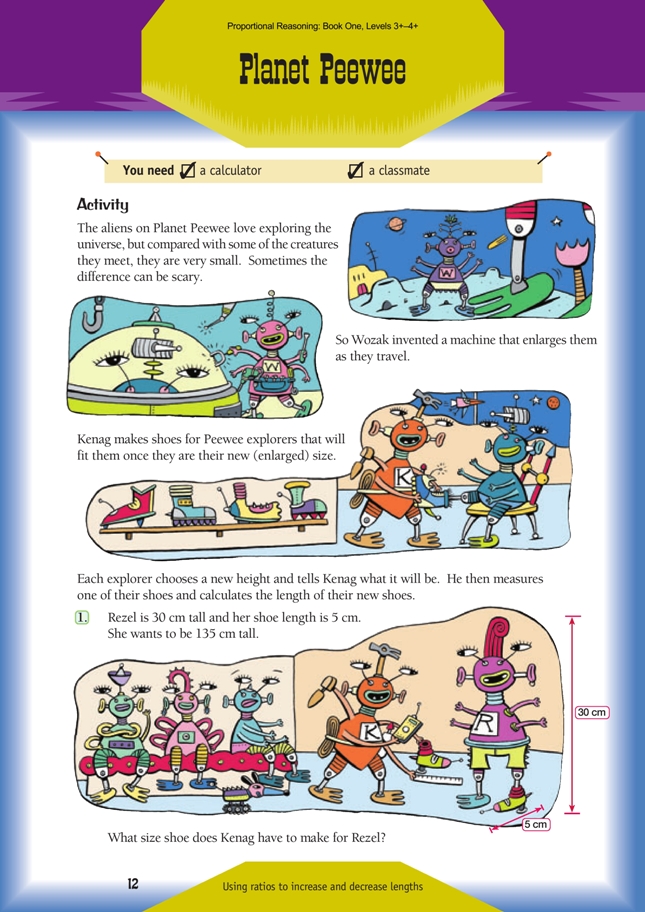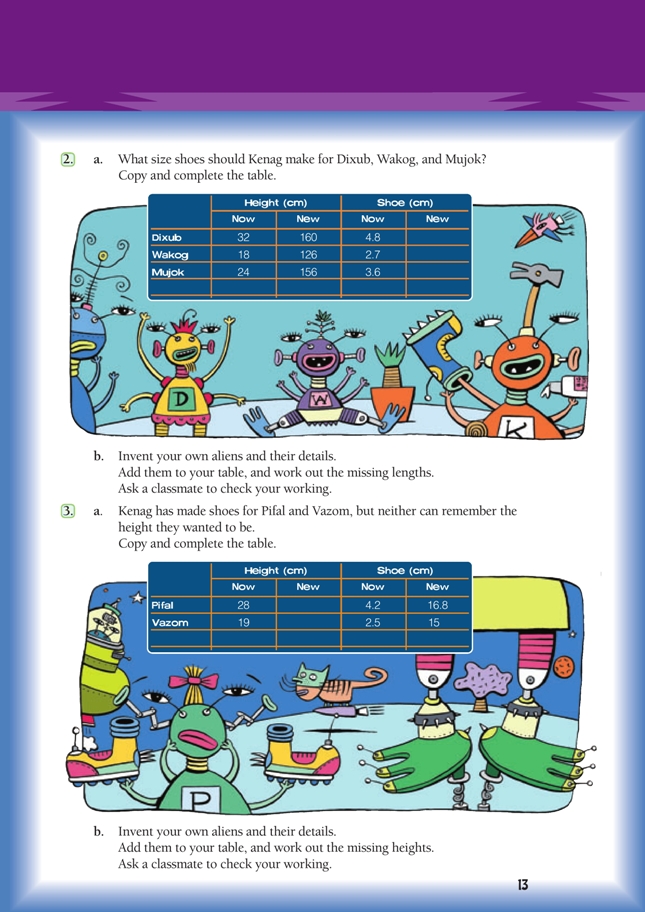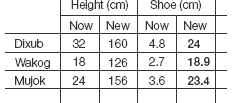This is a level 5 number activity from the Figure It Out series. It relates to Stage 8 of the Number Framework.
A PDF of the student activity is included.
Click on the image to enlarge it. Click again to close. Download PDF (838 KB)
use ratios to increase or decrease lengths
Number Framework Links
Use this activity to:
• encourage the transition from advanced multiplicative strategies (stage 7) to advanced proportional strategies (stage 8)
• develop confidence in students who are beginning to use advanced proportional strategies (stage 8).
FIO, Level 3-4+, Proportional Reasoning, Book One, Planet Peewee, pages 12-13
A classmate
In this fantasy context, students learn how to express the relationship between two measurements
as a ratio and then use this ratio to find a missing measurement.
Get the students to form small problem-solving groups to tackle question 1. To help them focus, put these questions to them:
• How many facts do we have? (3)
• How many details are we asked to find? (1)
• How are the three facts and the missing detail connected?
Have the groups report their findings. One line of reasoning goes like this: “If we can find out what we need to multiply the first height by to get the new height, we could use the same number to multiply the first shoe length to get the new shoe length.” Discuss strategies for solving the equation
30 x= 135.
Make sure that the students know that they can also write the new height / first height relationship in ratio format: 135/30 = 135:30 = 4.5 : 1
Another line of reasoning goes like this: “If we work out how many times taller the person is than the length of their shoe, we can divide their new height by this number to find their new shoe length.” Once the students see that Rezel’s height is 6 times her shoe length, they can solve the equation 6 x = 135.
The first height / shoe length relationship can also be recorded as a ratio, like this: = 30:5 = 6:1 Although the header for this activity suggests that a calculator is necessary, you could challenge your able students to manage without. The calculations lend themselves to strategies such as partitioning and the multipliers are all whole numbers or whole numbers plus 1/2.
Have the students work independently or in problem-solving groups on question 2a and then report back before tackling question 2b.
In question 3, the relationships are reversed. This time, the students need to work out the multiplier for shoe length and then use it to work out each alien’s new height.
By inventing their own aliens and measurements in questions 2b and 3b, students demonstrate that they understand how a ratio that applies to one set of measurements can be applied to another.
Once again, after your students have worked on question 3a, get them to discuss the thinking process. For example: “To find the multiplier, I needed to divide 16.8 by 4.2. I asked myself ‘4.2 times what makes 16.8?’ I could see that it was 4. So I multiplied the first height by 4. 28 x 4 = 112.”
This activity provides an ideal opportunity for showing students how to set up a spreadsheet and use a formula. If they enter the data from question 2 in columns as in the table, the program will label the columns from the left as A, B, C, D, and E. Students will need to enter a formula in column E that connects the other data and calculates the entry. In MS Excel, the formula would be =C1/B1*D1.
Answers to Activity
1. Rezel wants her height increased from 30 cm to 135 cm, an increase of 135/30= 4.5. So her shoes will need to be 4.5 x 5 = 22.5 cm long.
2a.
Dixub: 24 cm. (160/32 = 5; 4.8 x 5 = 24)
Wakog: 18.9 cm. (126/18 = 7; 2.7 x 7 = 18.9)
Mujok: 23.4 cm. (156/24 = 6.5; 3.6 x 6.5 = 23.4)
b. Answers will vary.
3a.
Pifal: 112 cm. (16.8/4.2 = 4; 28 x 4 = 112)
Vazom: 114 cm. (15/2.5 = 6; 19 x 6 = 114)
b. Answers will vary.



